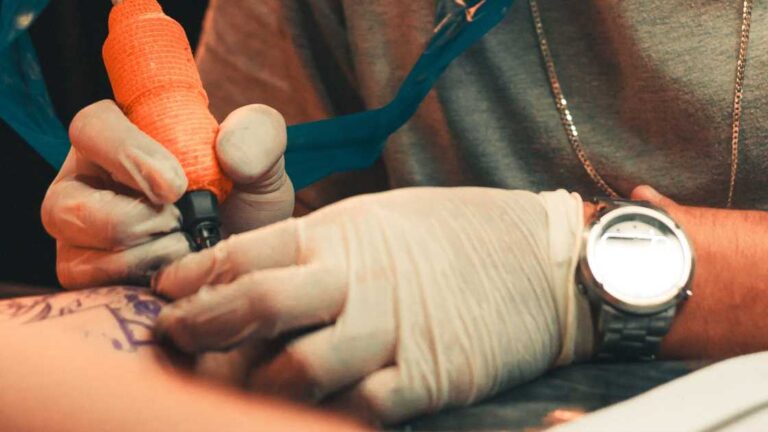For some people, seeing your skin change color can be worrying especially if it’s the lower part of your legs. The lower part of your legs changing color (red color) can be a result of a rash, skin conditions such as eczema, cellulitis (a skin infection), and many others. In this article, we will talk about the following
- Lower leg redness
- Associated characteristics of lower leg redness
- What are the possible causes of lower leg redness
- Treatment
- Most common causes of lower leg redness
- The warning indicators when lower leg redness is hazardous or life-threatening
- How long does redness in the lower legs generally last?
Lower leg redness
Several factors can lead to redness in the lower legs, and these can either be mild or severe. Some common causes of lower leg redness are cellulitis, allergic skin reactions, or blood clots developing in veins deep inside your body, especially your lower legs, leading to pain and redness in the lower legs (1)
Associated characteristics of lower leg redness
Depending on the cause of the redness of the lower legs, other signs and symptoms may be present. A few of them include:
- Scaly or flaky patches that may cause itchiness
- Skin plaques that may be weepy
- Leg pain or cramping
- A feeling of warmth on the affected leg (1).
What are the possible causes of lower leg redness?
The possible causes of redness in the lower legs can be put into the following categories.
- Leg redness due to infections
- Leg redness due to blood vessel injury or dysfunction, impaired blood flow or the increased tendency of blood to clot
- Skin reactions as a result of allergies or auto-immune disorders (2).
Let’s take a look at the common causes of leg redness.
Infectious causes
People with skin and soft tissue infections may present with cellulitis, abscess, and other forms of infections. These infections can cause rapidly progressive and severe illness if you do not seek medical care early enough.
Cellulitis
Cellulitis is a common bacterial skin infection that usually affects the legs and arms. It may develop around other body areas such as the mouth, eyes or anus. It causes redness, swelling, pain and warmth in the affected skin areas (3)
Most cases of cellulitis are caused by the streptococci (Group A ß – hemolytic streptococcus, Streptococcus pneumonia) and staphylococci (Staphylococcus aureus) bacteria. These organisms are commonly found on the skin and the inner lining of the mouth and nose of healthy people. When there is a break in the skin barrier, normal flora and other bacteria can enter and cause infection. Some normal skins can be affected by cellulitis (4, 5)
Cases requiring medical attention are usually treated with antibiotics.
Abscess on the skin
This is a localized collection of pus in the skin characterized by pain, tenderness and overlying redness. It can occur on areas of the body such as your trunk, arms and legs, armpit, head and neck, with Staphylococcus aureus and streptococci being the most common causative organisms. Abscess between the thighs, the areas around the scrotum or opening of the vagina and anus, may have some other types of bacteria present.
An abscess is usually treated with an incision and drainage surgery, after which the region is packed with material to prevent the wound from closing and allow it to heal from the bottom up (6).
Blood vessel injury or dysfunction, blood stasis or clotting
Thrombophlebitis
It is an inflammation of a vein because there is blood clotting inside the veins or there is injury to the vein walls. It occurs typically in the legs and may cause pain, redness, warmth, swelling in the affected area.
Treatment is optional when the clot is in a superficial vein, but it is required when the clot is in a deep vein (deep vein thrombosis or DVT) to cause the clot to disperse, avoid recurrence, and prevent the clot from migrating to the lungs and causing a pulmonary embolism (PE) (7, 8)
Risk factors for venous thrombosis include age(>60), cancer, obesity, cigarette smoking, heart failure, disorders that predispose blood to coagulation, trauma, immobility, sickle cell disease, surgery within past three months, pregnancy and postpartum and use of contraceptives (9).
Venous stasis dermatitis
Vascular dermatitis is also known as venous eczema, or stasis eczema. When there is dysfunction in the veins of your lower legs, blood does not move through very well to the upper parts of the body.
As more fluids build up in the affected veins, pressure also builds up, pooling blood in the tissue spaces in your skin. There is swelling and pain in the affected part, the skin may appear reddish, varicose may develop, the affected skin becomes itchy with sores that look dry and scaly or crusty, and ooze.
Conditions or states like hypertension, obesity, heart failure, kidney failure, pregnancy may predispose you to venous stasis dermatitis (10, 11)
Immune-mediated or allergic skin reactions
Eczema
Also known as atopic dermatitis, eczema is a chronic, itchy, and red skin condition. It is most common in children but can also affect adults.
Eczema in adulthood is mainly restricted to the flexing areas of the body, resulting in thickened, itchy skin. Eczema-affected skin can also be reactive, turning red in response to minor irritation or contact. Eczema can develop red bumps on its own or as a result of scratching due to severe itching.
People with eczema may be at risk of developing asthma or hay fever. Eczema involves the immune system and may have other contributing factors such as genetics and the environment (12, 13)
Psoriasis
This is an immune-mediated disorder that causes inflammation in the body. Plaques or large scales are formed on the affected parts. Scales usually develop on joints, such as elbows and knees. They may develop in other parts of the body including the hands, feet, neck, scalp and face.
These red regions are frequently defined by sharp borders, and may be reddened in persons with lighter pigment and darkened in people with darker pigment. Redness and scaling may be evident over the body from head to toe in some rare kinds of psoriasis (e.g., erythrodermic psoriasis) (14, 15)
Treatment for reddened lower legs
The type of treatment is determined by the cause of the redness. Blocked vessels must be unclogged, pooled blood must be moved, rashes must be treated, and infections must be treated. Some facts are provided below; nevertheless, optimal therapy may necessitate consultation with a medical expert.
Creams
Rashes such as eczema or psoriasis are commonly treated with steroid creams, dietary changes, avoid allergen exposure, or even anti-itch drugs if the redness is caused by scratching (16)
Medicine
After a comprehensive assessment to establish diagnosis of infectious causes such cellulitis and other infection-related rashes, your healthcare professional will initiate appropriate treatment with the recommended medications such as antibiotics and provide the necessary nursing and pharmaceutical care for a positive outcome in the long term.
Compression clothing
Compression clothing such as compression stockings are crucial tools to channel blood up and out of the lower vessels and back toward the heart if you feel your redness is caused by persistent pooling of blood in the lower limbs. They can both prevent and reduce edema in chronic conditions
Dissolving a clot
People with blood clots in the deep veins of the leg will require treatment to dissolve the clot and treat the underlying cause. Hospitalization may be necessary to administer recommended medications (17)
How can I avoid the common causes of lower leg redness?
Mild trauma, sunburn, or infection may cause lower leg redness. Wearing leg-covering apparel and being careful not to over-exert yourself when exercising can help prevent minor damage.
Mild trauma can also be avoided by stretching beforehand and becoming aware of the probable sources of harm. Sunburn can be avoided with the use of sunscreen, adequate clothes, and a prudent effort to keep out of the sun. Wearing suitable attire to avoid scrapes and bruises can help prevent mild illnesses.
What are the warning indicators when lower leg redness is hazardous or life-threatening?
Change in temperature (e.g., warmer or cooler in one leg than the other), a loss of sensation, swelling that does not improve with time, feeling of intense pain affecting movement, loss of pulse in the legs, feelings of shortness of breath or chest pain are all signs that you may have a condition that requires emergency medical attention.
How long does redness in the lower legs generally last?
Mild cases may last for a few weeks, such as infections requiring short courses of antibiotic therapy. Severe infections may last longer, particularly in cases where the underlying cause may require progressive monitoring and long-term management.
Summary
The lower part of your legs being red has a variety of causes, some of which are mild and the others life-threatening. Cellulitis, a skin infection, is one of the most common causes.
Redness in the lower legs might be caused by a simple and relatively common rash such as psoriasis or eczema. Infection is the most common cause of lower leg redness, and in mild cases, the body can eliminate the infection in two weeks or less.
Lower leg redness can be treated with antibiotics, creams, dissolving a clot, and compression gear.







Leave a Comment